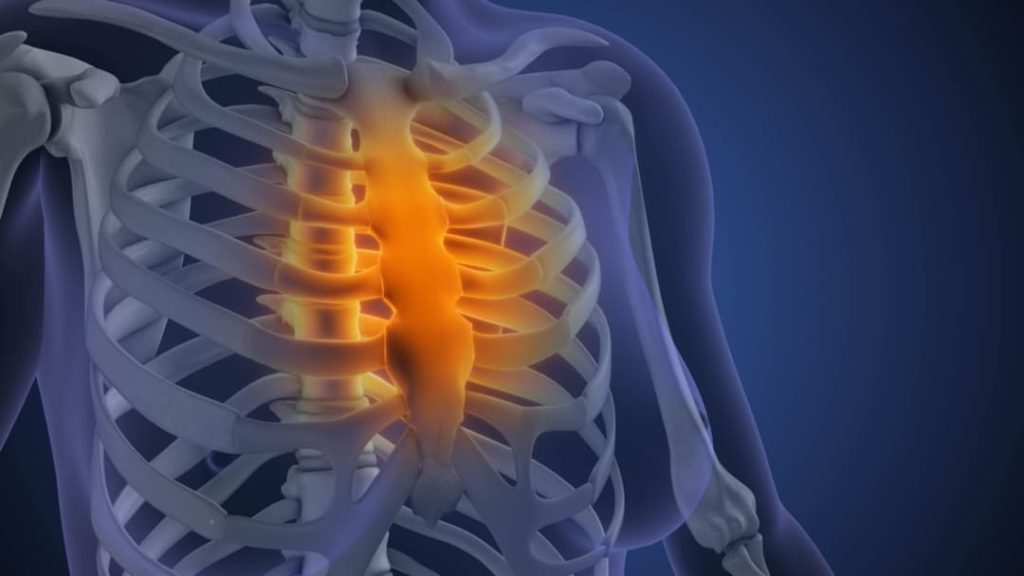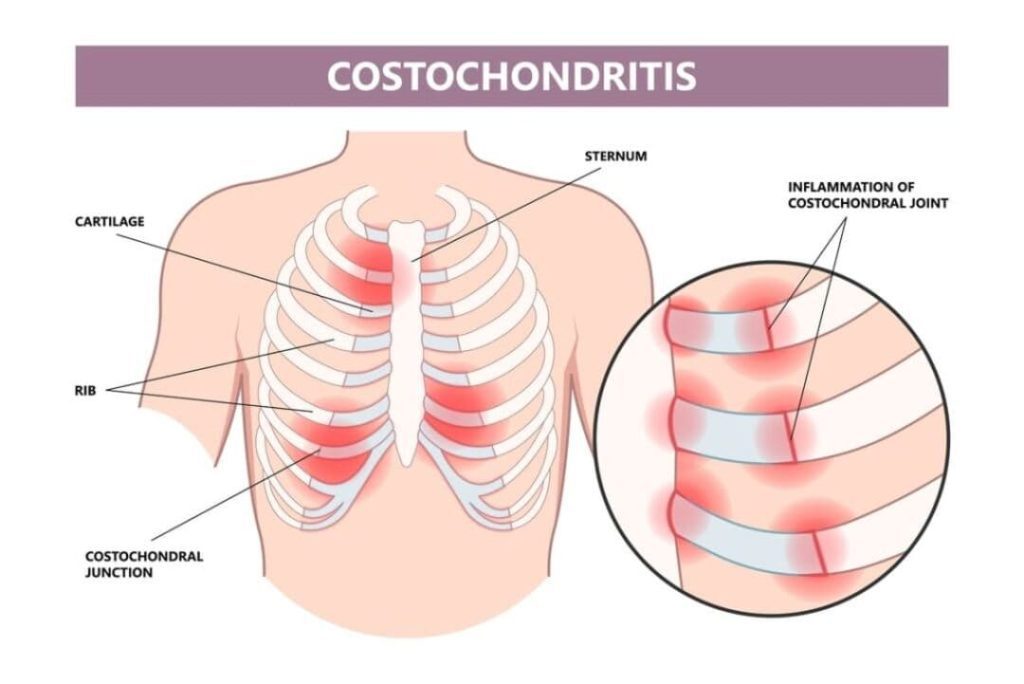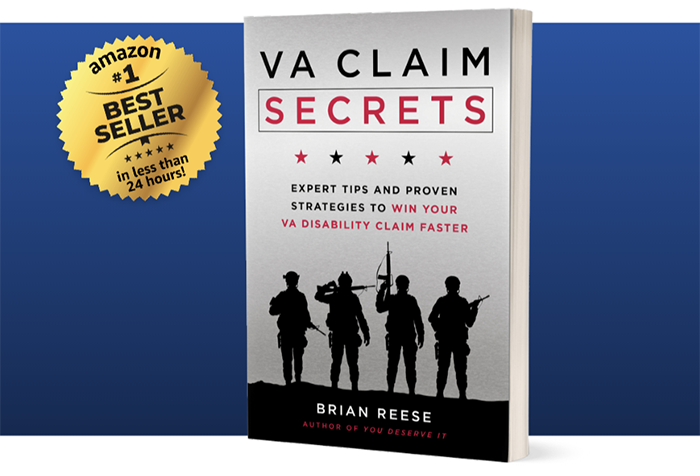Looking for Expert-Level VA Claim Answers?📱Call Us Now! 737-295-2226
Securing a costochondritis VA rating could finally put the compensation you rightfully deserve in your pocket. But how do you get there?
If you’re a veteran struggling with costochondritis, this post will help you understand:
- How the VA rates costochondritis
- What VA rating you may receive
- How to service connect your condition
- How to file a VA claim
- And more!
By keeping track of your symptoms, familiarizing yourself with the VA rating system, and gathering all relevant evidence, you can make your case for a costochondritis VA rating as strong as possible.
Summary of Key Points
- Costochondritis is an inflammation of the tissue that connects your ribs to the breastbone, frequently leading to pain and tenderness in the chest.
- While there is no specific diagnostic code for costochondritis, it’s typically rated under the § 4.73 Schedule of ratings—muscle injuries, Diagnostic Group 5321.
- VA ratings for costochondritis are 0%, 10%, or 20%.
Table of Contents

Costochondritis in Veterans
Costochondritis is an inflammation of the costal cartilage, which is the tissue that connects the ribs to the breastbone. Usually, the condition is harmless, but it can cause pain and tenderness in the chest.
While the exact cause of costochondritis is unknown, veterans and service members are at a higher risk for developing costochondritis due to their exposure to repetitive stress injuries and other trauma.
Costochondritis can be confusing to diagnose, as it has similar symptoms to other conditions, including a heart attack. Getting an accurate diagnosis early on can help ensure you receive the correct treatment and access the benefits you rightfully earned.
How the VA Rates Costochondritis
There is no specific diagnostic code (DC) for costochondritis; however, the VA recognizes it as a disability and uses a code from similar conditions.
Costochondritis is typically rated under the § 4.73 Schedule of ratings—muscle injuries, Diagnostic Group 5321, with ratings of 0%, 10%, or 20%. This diagnostic code is found in Group XXI, which covers the muscles of the chest.
Your VA rating for costochondritis will depend significantly on the severity of your symptoms.
VA Rating Chart for Costochondritis
| Diagnostic Group 5321 | VA Disability Rating |
| Severe or Moderately Severe: Evidence of inability to keep up with work requirements. Tests of strength and endurance compared show that you’re impaired. | 20% |
| Moderate: Record of consistent complaints of one or more of the signs of a muscle disability. Particularly lowered threshold of fatigue after average use, affecting the particular functions controlled by the injured muscles. | 10% |
| Slight: No signs or symptoms of muscle disability. No impairment of function. | 0% |
Note: Even if you receive a 0% VA rating for costochondritis, many great benefits are available to veterans with a 0% rating.
The more evidence you can show that demonstrates your costochondritis impacts your everyday life (especially when it comes to working), the better your chances of earning a higher costochondritis VA rating.
Proving Service Connection
The first step in getting a costochondritis VA disability rating is proving service connection.
Service connection means that your costochondritis is related to your time in service. To qualify for benefits, you must demonstrate that your costochondritis was either caused or worsened by your military service.
To be granted a costochondritis VA rating, you need three things:
- A current medical diagnosis of costochondritis
- An in-service event or injury that caused or aggravated your costochondritis
- A link (or Nexus) between your military service and your costochondritis (Your conditions must be at least as likely as not caused by your military service)
There are a few different types of service connections that you may use to qualify for benefits, including:
- Direct service connection – Your service directly caused or aggravated your costochondritis
- Secondary service connection – Another service-connected condition caused or aggravated your costochondritis
See also: What Does Service-Connected Mean?

You DESERVE a HIGHER VA rating. We CAN HELP.
Take advantage of a VA Claim Discovery Call with an experienced Team Member. Learn what you’ve been missing so you can FINALLY get the disability rating and compensation you’ve earned for your service.
Filing a VA Claim
If you’re looking to earn a VA rating for costochondritis, it’s important to gather all necessary evidence and documentation that shows your condition is connected to your time in service.
This may include medical records from in-service and any pertinent information from your doctor(s) regarding your current or past medical conditions.
If you’re ready to file a VA disability claim, there are a few steps you need to take:
- Gather your evidence and submit your intent to file (Submitting an intent to file sets a potential start date for your benefits.)
- Await a decision, but expect a compensation & pension (C&P) exam from the VA
- Appeal if necessary (denial or rating increase)
Related: The 5 Stages of a VA Claim Explained: What Happens After I File a VA Disability Claim?

(FAQs) Frequently Asked Questions
What diagnostic code does the VA use for costochondritis?
The VA typically uses 38 CFR 4.73 Schedule of ratings—muscle injuries, Diagnostic Group 5321, which covers muscle groups involved in respiration, particularly the thoracic muscles, to rate costochondritis.
Is there a chest pain VA disability rating for costochondritis?
Generally, chest pain VA disability ratings range from 0% to 100%, which differs from the costochondritis VA ratings. While costochondritis causes chest pain, the two conditions are rated differently.
In addition, chest pain can fall under several diagnostic codes, depending on the official medical diagnosis.
Can I file a VA claim for costochondritis as a secondary condition?
Yes, costochondritis can be filed as a secondary condition if it is related to a service-connected condition. For example, if chest injuries or respiratory conditions sustained during service contribute to costochondritis, it may be claimed as secondary.
Can I get TDIU for costochondritis?
You may be eligible for Total Disability based on Individual Employability (TDIU) for costochondritis, but it will be difficult if it’s your only condition.
However, if you combine your costochondritis with other service-connected conditions and you reach a combined VA rating of at least 70%, you may qualify for TDIU, provided you can demonstrate that you are unable to maintain substantially gainful employment due to your service-connected disabilities.
SEE MORE: VA TDIU Approval Rate: Top 5 Questions Answered
NEED MORE ASSISTANCE?
Most veterans are underrated for their disabilities and, therefore, not getting the compensation they’re due. At VA Claims Insider, we educate you on how to understand and take control of the claims process so you can get the rating and compensation you’re owed by law.
Our process takes the guesswork out of filing a VA disability claim and supports you every step of the way in building a fully developed claim (FDC)—so you can increase your rating fast! If you’ve filed your VA disability claim and have been denied or have received a low rating—or you’re unsure how to get started—reach out to us!
Take advantage of a FREE VA Claim Discovery Call. Learn what you’ve been missing—so you can FINALLY get the disability rating and compensation you deserve!

Kelly Olone
Kelly Olone is a military spouse who earned her degree in Psychology from Florida International University. After working in the non-profit sector for several years, she turned to her passion for writing. She aims to contribute to a better understanding of the valuable benefits that veterans deserve. As a mom, Kelly navigates the delicate balance between deadlines and bedtime stories with finesse.




